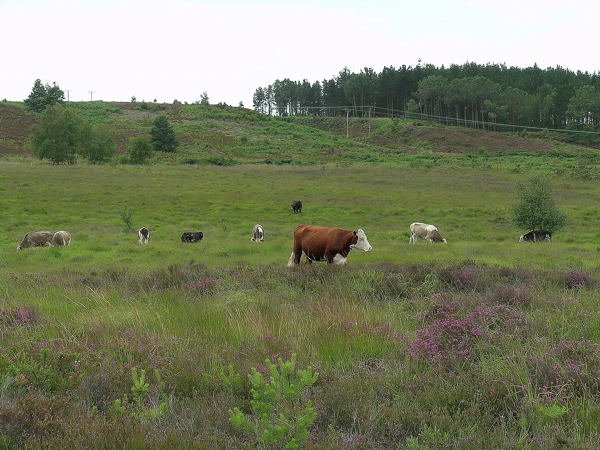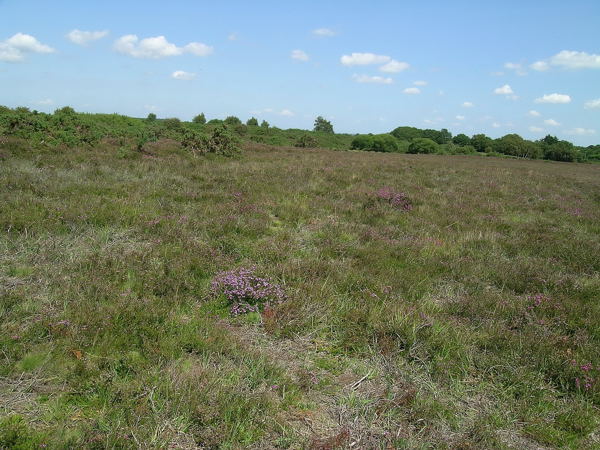 |
 |
Minley Adders: |
| Author | Message |
|
John Member Joined: 07 Apr 2006 No. of posts: 15  View other posts by John |
Posted: 22 Mar 2008 Hi these little monkeys were from a site in minley hants, though alot of the adders i see are close to thick gorse for instant get away, so i was wondering can adders be seen readily in the wide open heath?? im sure there there but i tend to focus alot of my attention on the banks. The reason i ask is that when ive seen Coronella austriaca they were in open heath, and want so desperately to see one of these near me in yateley  |
|
Suzi Senior Member Joined: 06 Apr 2005 No. of posts: 860 View other posts by Suzi |
Posted: 22 Mar 2008 I think you'll find adders tend to be on the edge of cover for instant get away. I see them on the very edge of fire-breaks but close to the heather. Also on the soil on the edge of the large bare scrapes that heath managers like to create. I've never seen an adder lying out right in the middle of a bare patch devoid of nearby cover unless it is on the move (e.g. moving quickly across a track). Suz |
|
armata Forum Specialist Joined: 05 Apr 2006 No. of posts: 928 View other posts by armata |
Posted: 23 Mar 2008 If the heather is mature (thigh high) with a good mossy substrate then yes you will find them, but more likely in the summer. They will be near thicker cover on suitable Southerly aspect in winter/spring/autumn 'I get my kicks on Route 62' |
|
armata Forum Specialist Joined: 05 Apr 2006 No. of posts: 928 View other posts by armata |
Posted: 23 Mar 2008 John - this photo explains it more clearly. Here where the cattle are grazing is typical summer ground for adder/smooth snake/grass snake, i.e. wet heath. The sloping ground in the background is the hibernation area and has more cover i.e. dry heath/gorse etc.  'I get my kicks on Route 62' |
|
armata Forum Specialist Joined: 05 Apr 2006 No. of posts: 928 View other posts by armata |
Posted: 23 Mar 2008 Here is another example - hibernation area on the left with short dry heath leading to boggy summer ground (not shown. Its a bit of a case of running the gauntlet but must have improved since thgei pic was taken  'I get my kicks on Route 62' |
|
armata Forum Specialist Joined: 05 Apr 2006 No. of posts: 928 View other posts by armata |
Posted: 23 Mar 2008 And finally, detail of part of hibernation area previous photo.  'I get my kicks on Route 62' |
|
John Member Joined: 07 Apr 2006 No. of posts: 15  View other posts by John |
Posted: 23 Mar 2008 Ah thanks chief - that does confirm alot of my thoughts ok so before they disperse in the summer time to the open heather, is this to mate, or is that done prior? - also is it correct that once mating has taken place, very little is known as to where the adder goes? are they solitary?? - and would they still look to bask together in open heath or im guessing thats done in spring as they share their body heat?? thanks |
|
armata Forum Specialist Joined: 05 Apr 2006 No. of posts: 928 View other posts by armata |
Posted: 23 Mar 2008 John - The adder mating period is about to start, usually peaks around 2nd week of April in the south. This is done in close vicinity to hibernation areas. Some adders, immature and non-breeding females will leave for summer grounds about end April or earlier. Adder hibernation areas represent a largely autonomous subpopulation within a general area, which if large will contain X number of such subpopulations. Genetic stability is maintained by immatures migrating from mutual summer grounds to subpopulations other than their birthplace. Thermoregulation is essentially provided by heliothermnic overt basking, there is little evidence for shared body heat as you state. 'I get my kicks on Route 62' |
- Minley Adders |